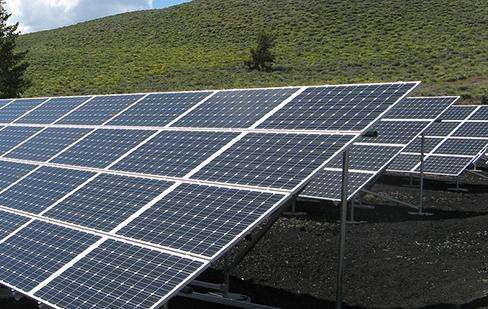Think of a problem. One end of a dry towel is placed in a cup filled with water. As a result, the dry towel becomes wet. It is true that the position of part of the water has increased. and the potential energy increased. However, potential energy does not come from nothing. The corresponding forces in the capillary phenomenon do work, which corresponds to a reduction in energy in the capillary.
Our hydroelectricity is generated by water evaporated by the sun in the sky, turning into rain and falling back to the earth to form streams. Ultimately, the sun is constantly generating energy. The corresponding different energies in the capillaries cannot be generated continuously like the sun. Even capillary action in plant transpiration is due to constant exposure to sunlight.
In short, when the capillary phenomenon occurs, the surface energy of the capilThe energy is converted into the potential energy of the water. If you want to convert the potential energy of water into electrical energy, you must overcome the surface area. Energy (like blowing air into the capillary appropriately, just overcome the surface energy so the water can flow), energy is conserved.
We should think carefully about how to obtain potential energy from “water raised by capillary action”? You might say you can just use gravity, but remember that water is pulled by surface tension. We therefore still have to overcome these potential surface energies! The result is of course: a perpetual motion machine cannot be built!
Scientific and technological inventions for primary school students
The method is as follows:
1 Add a third of a. glass with a diameter of 7.5 cm Four of water.
2. Addz a spoonful of salt to the water. Salt can help conduct electricity (although chlorine gas is produced during electrolysis due to the addition of chloride, as long as the current is not very large, the amount of gas impurities will not be important).
3. Cover the glass with cardboard. Then insert two wires 30 to 60 cm long onto the cardboard spaced about 5 cm apart, and let the part of the wires 5 to 7 cm long be immersed in the water.
4. Connect the other end of the wire to the positive and negative poles of the 9-volt power supply. Soon you will see bubbles forming near the wire in the water, hydrogen is produced at the negative electrode and oxygen is produced at the positive electrode.
5. If you want to prepare a large quantity of hydrogen or oxygen you can do the following steps as appropriate, otherwise just skip to step 5. You will need a small container (a syringeis preferred) and something to hold the container upside down (usually tape).
6.Immerse the small container in the glass. Do not take the small cup out of the water or place the mouth of the small cup upwards, but turn the small container over so that the mouth of the small container contacts the bottom of the large cup ( if you use a syringe). , simply insert the small opening at the front of the syringe into the water, then remove the center stem, fill it with water, then go straight to step 9).
7. Slowly pull the small cup up, but don't let the water out. The end effect is that the small cup protrudes above the water and is filled with water (the pressure causes the water to stay inside the small cup).
8. Use tape, clips, etc. to fix the small cup.
9. Connect the positive and negative poles of the wire. Insert into a small container.
10. When the small container is filled with gas, it can be removed.
Safety: Since the battery is used for electrolysis, the current is low and relatively safe, allowing children to try the operation.
1. Fruit Generator: Use lemons, apples, oranges and other fruits to generate electricity and learn the principles of electricity generation.
2. Paper Cup Microphone: Use materials such as paper cups and earphone wires to make a simple microphone and understand the principle of signal transmission.
3. Simple Wind Turbine: Use small fans, magnets, coils, and other materials to learn the principles of wind power generation.
4. Simple Telescope: Use two magnifying lenses, tape, and other materials to learn the principles and methods of producing telescopespes.
5. Simple solar water heater: Use black plastic bags, transparent plastic bags, aluminum foil and other materials to learn the working principle of solar water heaters.














